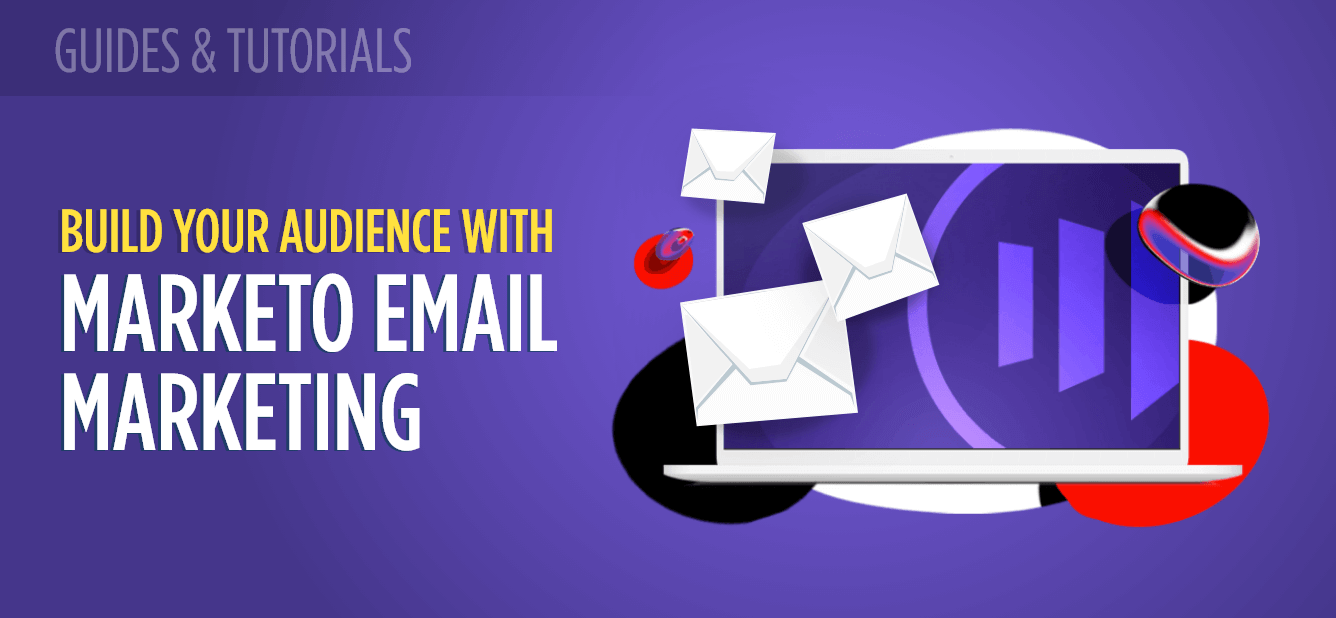Understanding the Concept of Marketo
Marketo sits firmly at the heart of the marketing automation world, it is a tool that facilitates streamlined, automated, and measured marketing processes and tasks. Envisioned and designed to increase operational efficiency, the platform allows marketers to establish personalized experiences, with the ultimate aim of driving revenue growth.
The realm of Marketo extends beyond a mere marketing automation tool; it provides digital marketing software solutions encompassing lead management, email marketing, consumer marketing, customer base marketing, and mobile marketing among others. Generally, the tool is employed for engagement marketing, including online marketing, using various techniques such as content marketing, personalized email marketing, social media marketing, mobile marketing, and search engine marketing.
Marketo is a remarkable platform that offers an array of features and benefits. Its primary function is to automate marketing processes, making them more efficient and effective. This not only saves time but also ensures better results in terms of revenue generation.
• Marketo’s lead management feature allows businesses to track potential customers (leads) from the moment they show interest in their product or service until they become actual customers. It helps prioritize leads based on their level of engagement and likelihood to convert, ensuring optimal resource allocation.
• The email marketing feature lets marketers create personalized emails for different customer segments, thus enabling targeted communication. This increases the chances of conversion by delivering relevant content directly to the inbox of potential customers.
• Consumer marketing involves understanding consumer behavior and leveraging this information to create personalized experiences. Marketo provides tools for tracking user activity across various touchpoints, which aids in building comprehensive consumer profiles.
• Customer base marketing focuses on retaining existing customers by keeping them engaged with your brand through regular communication and exclusive deals/offers. Marketo allows you to manage these communications efficiently while ensuring consistency across all channels.
• Mobile marketing has gained significant importance with increased smartphone usage worldwide. With its mobile marketing feature, Marketo enables businesses reach out directly to consumers’ mobile devices via SMSes or push notifications, thereby increasing visibility and engagement levels significantly.
In addition to these specific solutions, Marketo excels at engagement marketing – using online techniques such as content creation/distribution, social media campaigns, search engine optimization (SEO), etc., it engages prospects throughout their buying journey leading towards conversion into loyal customers.
Overall, understanding the concept of Marketo requires recognizing its multifaceted nature – it’s not just a tool for automation; rather it’s a comprehensive suite designed for facilitating seamless interactions between brands and their target audience over multiple platforms/channels while driving revenue growth simultaneously.
The Origin and Development of Marketo
In the bustling city of San Francisco back in 2006, Phil Fernandez, Jon Miller, and David Morandi launched Marketo with a simple goal – to create a new kind of enterprise software company, built around innovation and customer success. Their vision was to revolutionize the marketing world by using technology that could provide automation and analytics which was much needed during that time. The trio never anticipated the sweeping success they would achieve in a relatively short period. Marketo made waves in the technology ecosystem by introducing disruptive business models and remarkably intuitive software.
Over the years, Marketo has grown by leaps and bounds, developing its platform through significant investments in research and development. Its product suite, initially starting with basic email marketing, has evolved to a comprehensive marketing automation platform that encompasses social marketing, customer engagement marketing, lead management, budgeting, and marketing analytics. The company went public in 2013, and in 2018 it was acquired by Adobe, thereby integrating its capabilities with Adobe’s robust marketing solutions. Marketo’s journey till date is a testament to its deep commitment towards fostering innovation and delivering superior customer value.
Key Features and Functionalities of Marketo
One of the distinct features of Marketo is its advanced lead management capabilities. This empowers businesses with the ability to track and manage leads across multiple channels. Marketo’s lead management systems incorporate functionality for lead scoring, nurturing, and tracking, thereby providing marketers with comprehensive data which is vital in decision making. Moreover, it also has features like CRM integration for seamless communication between marketing and sales teams, thus ensuring all leads are effectively managed.
Another vital functionality of Marketo is its engaging email marketing system. This feature offers marketers the tools to devise personalized, automated, and measurable email campaigns. With its dynamic content capabilities, Marketo enables businesses to send relevant and personalized emails to different segments of their audience. Also, this platform comes with a visual drag-and-drop interface, enabling marketers to create professional and engaging emails quickly. This, combined with its A/B testing feature, ensures businesses can optimize their email marketing strategies for maximum performance and results.
The Role of Marketo in Marketing Automation
Marketo offers a significant shift in marketing automation by providing a comprehensive solution that integrates all communication channels. This enables marketers to plan, coordinate, manage, and measure all their marketing campaigns, both online and offline. The platform allows for the creation of individual customer profiles based on their interactions with a business. Such profiles help in precisely tuning marketing efforts to the preferences and behaviors of the targeted audiences.
Within Marketo, marketers can leverage automation to streamline workflows and minimize manual effort. This not only enhances efficiency but also reduces scope for human error. The platform’s capabilities extend to email marketing, social media, SEO, digital ads, and analytics. By offering a robust score model, Marketo aids marketers in identifying the most promising leads based on their interaction and level of engagement. This segmentation and prioritization further help in directing marketing efforts to fruitful avenues. Marketo’s role in marketing automation, thus, is marked by a customer-centric approach and efficiency in campaigns.
How Marketo Enhances Customer Engagement
Marketo, a leading marketing automation platform, leverages adaptive technologies to enhance customer engagement. Through personalizing the customer experience, businesses are enabled to construct intuitive and effective campaigns. Personalization is made possible with features that allow marketers to customize their content based on client preferences, previous interactions, and general behavior. The ultimate aim is to resonate deeply with the target audience and generate meaningful interactions that upgrade casual visitors into devoted customers.
It evolves beyond the typical parameters of marketing and caters to users by offering them a distinctive experience centered around their unique needs and desires. By utilizing Marketo’s multi-channel distribution abilities, businesses can provide correspondence through various platforms such as emails, mobile applications, social media, and digital ads, offering a comprehensive engagement ecosystem. This approach secures better connection with customers, keeping them engaged in the long run, and fostering stronger, more profitable business relationships. On a granular level, Marketo not only augments customer engagement but it also boosts brand loyalty and trust.
Exploring the User Interface of Marketo
The Marketo user interface is designed to be both robust in functionality and intuitive in usability, enabling marketers to navigate through diverse tools and data without any rigorous training. Navigating within the platform, users will encounter five major sections: Marketing Activities, Database, Design Studio, Analytics, and Admin. Each section is segregated to perform a specific function, facilitating organized workflow. For instance, Marketing Activities is for creating and managing campaigns whereas Analytics serves as the hub for reports and insights.
A glimpse into the Design Studio enables users to manage and create landing pages, emails, and other static assets. Organized like a folder system, it simplifies the process of finding various campaigns or assets. The Database, on the other hand, places the customer at the center, helping marketers to manage leads, segmentation and more. Admin is where users can control setup, security, integrations and other global settings. Thus, the user interface of Marketo, though complex, is broadly considered user-friendly, promoting seamless interactions and operations.
Benefits of Using Marketo for Businesses
Marketo offers numerous benefits that contribute to the enhancement of business operations. Primarily, it enables companies to create and manage effective, personalized marketing campaigns through various channels. Its comprehensive capabilities, from email marketing to lead management, provide businesses with an all-encompassing solution to reach targeted audiences effectively. This holistic approach can drive higher marketing return on investment, enhancing the performance of the marketing team.
Furthermore, Marketo promotes productive customer engagement. A data-driven design supports an informed interaction strategy, ensuring highly targeted marketing efforts. The ability to track and analyze customer behavior provides insights that serve to refine marketing strategies. With Marketo, companies can better understand their customers, build meaningful relationships, and ultimately increase sales, accentuating the significance of Marketo in modern marketing models.
Comparing Marketo with Other Marketing Automation Tools
In the realm of marketing automation, several tools contend for the top spot. Marketo, a leading player in this field, often finds itself juxtaposed with other robust platforms such as HubSpot, Eloqua and Pardot. These platforms, although sharing fundamental features like lead management, email campaign building, and detailed analytics, each have unique strengths that set them apart from the competition. For instance, Eloqua is widely recognized for its complex campaign design abilities while Pardot excels in its integration with Salesforce.
However, Marketo has carved its niche with a comprehensive toolset aimed at managing customer engagement at every stage of the sales funnel. Its intuitive and streamlined interface sets it apart, enabling users, whether marketing novice or experts, to craft successful campaigns. HubSpot, while a strong contender, offers a more extensive suite of software for inbound marketing, sales, and customer service, which may not be necessary for companies primarily focused on marketing automation. Therefore, while each of these tools offers a powerful solution, the choice largely depends on the specific needs of the business.
Case Studies: Success Stories Using Marketo
Microsoft’s adoption of Marketo is a shining illustration of the tool’s transformative potential. By integrating Marketo into their operations, this tech behemoth managed to streamline their marketing automation processes. Marketo’s strong demand generation capabilities were skillfully harnessed by Microsoft in order to augment the number of high-quality leads, resulting in an impressive spike in sales numbers.
Similarly, the globally recognized finance firm, Charles Schwab, harnessed the power of Marketo to forge a more personalized route to customer engagement. Utilizing Marketo’s behavioral tracking, they created dynamic lead scoring and nurturing campaigns, subsequently leading to a meaningful increase in conversion rates. Charles Schwab’s success affirmed Marketo’s superiority in predicting customer behavior and its capacity to bolster lead conversion and customer loyalty.
Tips and Strategies for Maximizing Marketo Usage
Bolstering the efficacy of Marketo usage requires a comprehensive understanding of its functionalities and strategic implementation in marketing efforts. Developing a plan before implementing Marketo is crucial. This involves defining marketing goals and objectives, identifying the target audience, and mapping out the customer journey. Knowing the desired outcomes helps in optimizing the use of Marketo’s various features such as emails, landing pages, and campaigns.
The adoption of A/B testing is another effective strategy for maximizing Marketo usage. This method allows users to compare different versions of a campaign to determine which one performs better. It helps in understanding customer behavior and preferences, hence, improving the relevance and effectiveness of marketing efforts. It is essential to note that regular review and adjustment of strategies is a key step to ensuring that Marketo continues to contribute significantly to the growth of a business.
What exactly is Marketo and how does it work?
Marketo is a powerful marketing automation software that helps businesses manage their multi-channel marketing campaigns. It allows organizations to engage with customers in a personalized way, at scale, and across various digital platforms.
How has Marketo evolved since its inception?
Since its inception, Marketo has grown and developed significantly. It has integrated more features that focus on customer engagement, data analytics, and digital marketing. They have also improved their user interface to be more intuitive and user-friendly.
What are some of the key features and functionalities of Marketo?
Marketo offers a range of features like email marketing, lead management, consumer marketing, customer base marketing, and mobile marketing. It also provides analytics tools for measuring the effectiveness of marketing campaigns.
How does Marketo contribute to marketing automation?
Marketo automates many marketing tasks, enabling businesses to more effectively engage with customers and prospects. It allows for automated email campaigns, lead generation, segmentation, and customer journey tracking, among other functions.
How does Marketo enhance customer engagement?
Marketo enhances customer engagement by allowing businesses to create personalized content and messages tailored to the needs and interests of their customers. It also provides tools for tracking customer behavior and engagement, which can be used to refine marketing strategies.
Can you guide me through the user interface of Marketo?
The user interface of Marketo is intuitive and user-friendly. It includes a dashboard that displays a summary of your campaigns, as well as features for designing emails, managing leads, analyzing data, and more.
What are the benefits of using Marketo for my business?
Marketo can help businesses streamline their marketing efforts, improve customer engagement, and ultimately increase revenue. It also provides valuable insights into customer behavior and the effectiveness of marketing campaigns.
How does Marketo compare with other marketing automation tools?
While there are many marketing automation tools available, Marketo stands out for its comprehensive features, user-friendly interface, and strong focus on customer engagement. However, the best tool for your business will depend on your specific needs and budget.
Can you share some success stories of businesses using Marketo?
While specific case studies would be included in the article, many businesses across different industries have seen success with Marketo. They have benefited from improved customer engagement, more effective marketing campaigns, and increased revenue.
What are some tips and strategies for maximizing my usage of Marketo?
To maximize your usage of Marketo, it’s important to fully understand its features and capabilities. Regularly monitor and analyze your marketing campaigns, personalize your content, integrate Marketo with other business tools, and make use of the software’s customer segmentation features.




